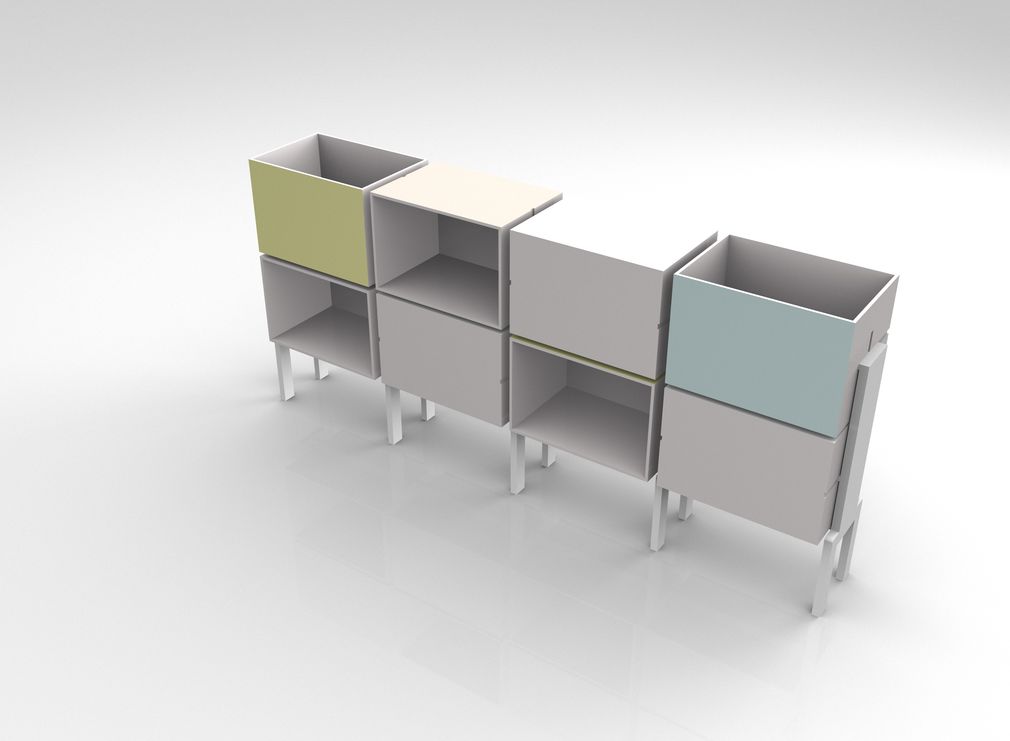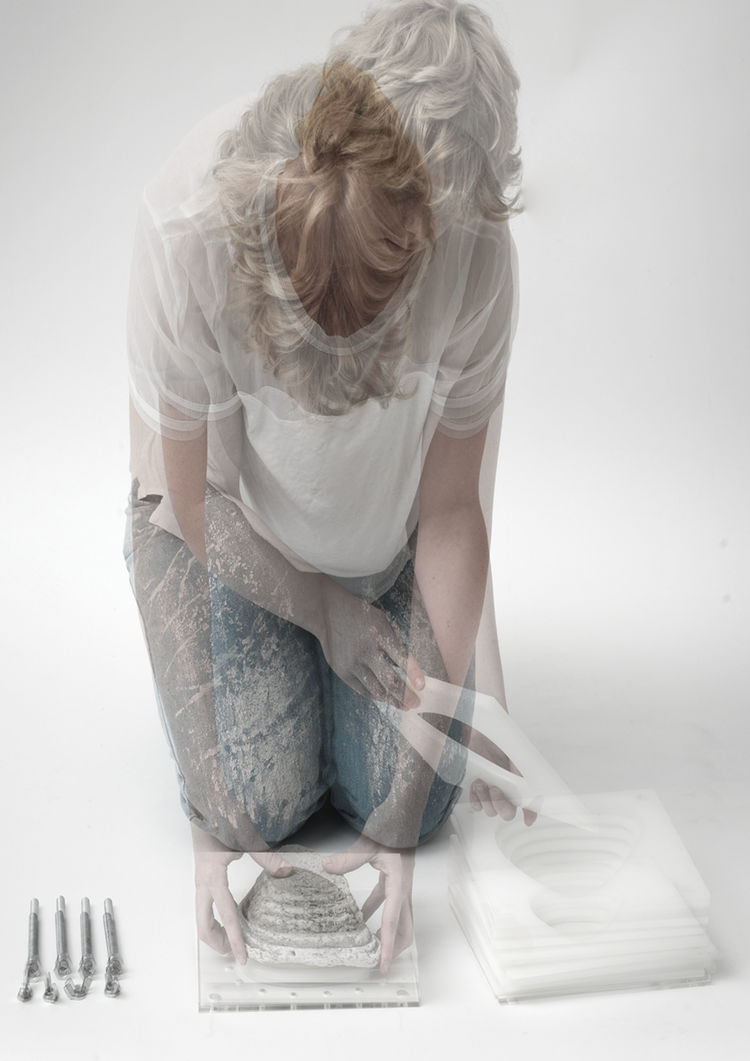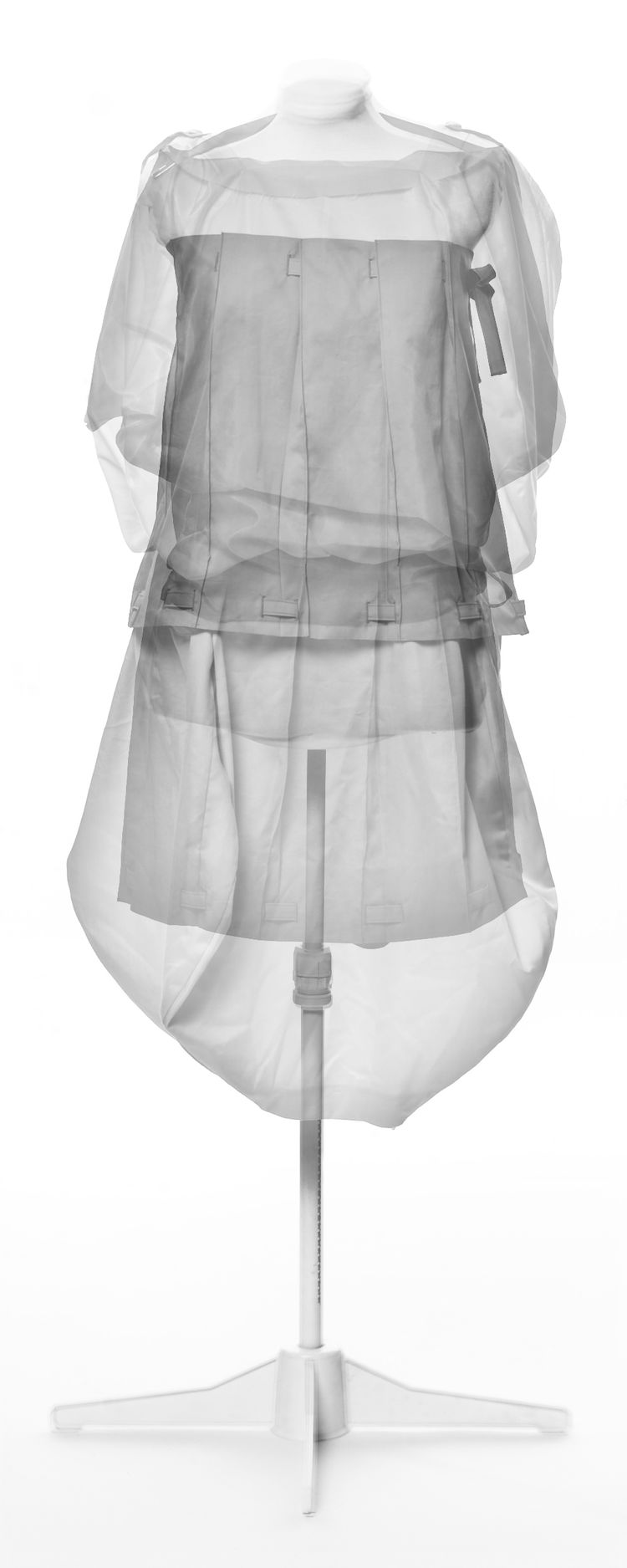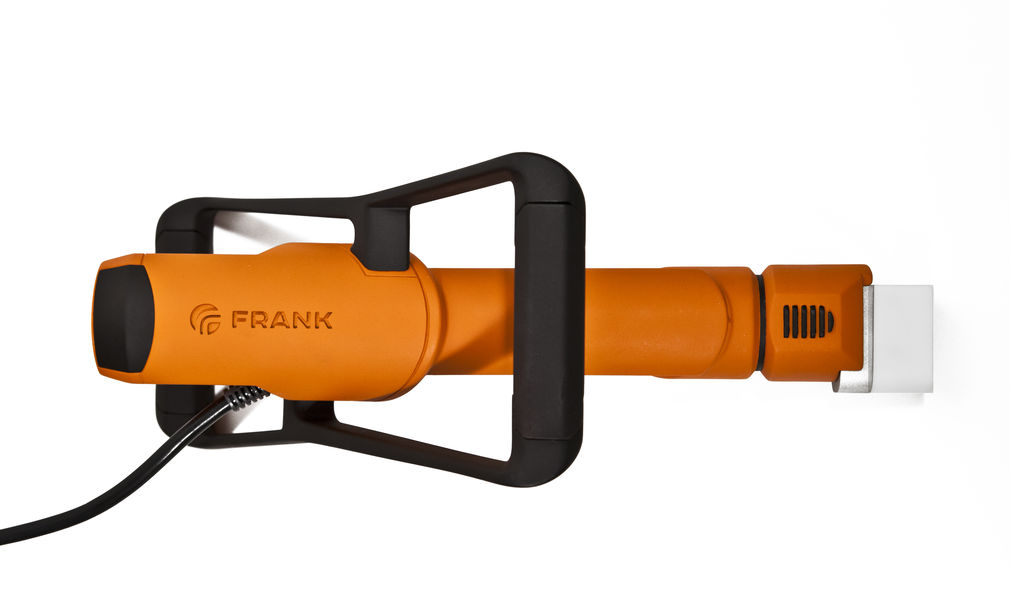Department of Design

The Department of Design as the focus of creative thought stands out for its highly open approach. The extensive range of classes on design practice and theory leave much scope for personal development. Experimentation, questioning, and research are becoming ever more important in an interdisciplinary world of information and dynamic knowledge. As the core and interface discipline, design in this regard dedicates itself to the wide variety of design and research tasks from all areas of society, culture and science, business, nature, technology and industry, and concentrates on a holistic outlook.
Today, studying design means more than ever being interested in countless fields of knowledge, being inquisitive, exploring what is feasible, and independently questioning the givens. The faculty responds to this by functioning as the place where students can try things out and acquire the requisite communications tools for interdisciplinary dialog.
Major fields of study
The educational program offers creative, theoretical and technological guidance by providing programs led by twelve professors (of which five are design professorships, two theory professorships, two honorary professorships, one technology professorship, one endowment professorship and one visiting professorship). In addition to this, two teachers for special purposes supplement the educational program, supported by five specialists and heads of workshops in the department’s labs.
The fields of activity for product design are comprehensive and concern all social, technological and economic spheres of our modern, engineered civilization.
In essence, product design is concerned with designing for prudent use (user experience, interaction design, researching needs, ergonomics, etc.). Yet this relates to more than just use itself: looking at production processes (material, construction, ecology and so on), the marketing process (branding, market analysis, target audiences, visual language, formal styles, etc.) and the consumption process (recycling, social usage types, etc.) is now more important than ever. This is why the profession is subject to constant modification and adjustment and requires designers to possess a continuous readiness to learn – both in practice and theory. Digital technologies and techniques in particular have changed the design process. In essence however, design remains about the same thing: the skilled formal-aesthetic construction of an object or process that appropriately implements the communicative demands and qualities of a product, while aiming to reflect progress in society, economy and technology.
At the Department of Design, this complexity is covered by the teaching provided. In addition to this, the department continues to develop new profiling areas for designers: design management, design journalism and design curatorship are further new areas of activity in which designers work.

Portables Thermosiphonsystem
Benjamin Würkner, 2012
Design teaching areas
What should a product designer be able to do? At its core, the product design process consists of typical tasks that require certain abilities, qualifications, capabilities and craftsmanship: competences best described as skills. Designers need a sense of the whole, they need to be able to keep the overall goals of a project in mind, acquire specific knowledge and see the project in a wider context – these make up the designer’s individual design skills. Then there is a sense of material and form, for instance: How do I create the transition from one geometric shape to the next? This includes drawings, renderings in different stages, simple and complex models: How universally understandable is an interface? This includes a sense, understanding and love of form and detail in analogue and digital contexts (formal aesthetics). The necessity of skills is underlined, for example, by Bruno Latour: »A mad attention to the details has always been attached to the very definition of design skills. [...] there is a sense of skillfulness, craftsmanship and an obsessive attention to detail that make up a key connotation of design.« Along with an affinity with detail, designers also need commitment, empathy, poetry and humor, criticism and powers of persuasion. Design is not merely the crucial factor in individual innovations. Design is also embedded in larger innovation processes, and in this, designers need to be able to work in structures that can also be described as networks with different agents.

Bahn Voyage
Steffen Reiter, 2013

Böx
Constanze Leuchtmann, 2013
Theoretical teaching areas

Formpresse
Annika Bonner
Photo: Wolfgang Seibt / Annika Bonner
Introduction to the Department of Science
Reflecting on the shape of human products is as old as western philosophy. Admittedly, for a long time the way artifacts were designed was not a problem. This had to do with the idea that in the last instance human products are always only imitations of what Nature creates. The ancient Greeks, for example, as we learn from Aristotle, were of the opinion that even a structure that seems somewhat unnatural, like a house, is nonetheless in essence basically the same as what it is based on, for example a cave. Accordingly, a house is just an improved form of the natural enclosure, which accounts for the core of its being. Correspondingly, thinkers such as Plato considered human improvements to be attempts to do justice to the primeval form of things or the idea underlying them. As such, column portals imitated and at the same time geometrically improved tree trunks, which once gave the porches of huts a befitting appearance, as joined walls imitated the hewn interior of a cave, and windows a view which otherwise only paintings could.
Nor did earlier Modernity have any real theoretical problem with the design of artifacts. Equipment and devices that were so improbable they had no precedent in Nature, in the way that the renaissance relied on Classicist predecessors, were considered to be deformities and monsters of nature, which could be viewed together with the wonders of technology in specially established art chambers.
Not until the Industrial Revolution did it become obvious that at long last things shaped by human hand had an inherent right to lay claim to validity. New materials and production technologies enabled even the most everyday objects to boast previously unseen designs that could look absolutely sensational. And at the same time popular taste became radically freed as soon as objects such as these were no longer manufactured just for local markets and needs, but on a global scale and as mass-produced goods. The presentation of industrial products at world expositions from the mid-19th century onward marked the cultural seal of approval for both trends.
At the same time architects and authors such as Gottfried Semper were first weighing up the basic methods for this new creative freedom. The approach pursued back then, namely of entrusting the design of things the engineers, did not have the makings of a permanent solution, just as the opposing tendency to conceal technical innovation behind old shapes came to nothing. Gas lamps which looked like candles, for example, aroused Semper’s theoretical ire. The desire grew in him to give the technical progress a form that would be appropriate to the object in a totally new way. Since Semper formulated his fundamental ideas there have essentially been two established approaches in design theory. One still attempts to consciously pursue the old scheme of an ur-form of things or just as self-consciously distance itself from that. Classicism, on the one hand, and forms of decadence, on the other, alternate or at least interact with one another. Even the late 19th century was confronted with opposing trends, something that goes back to the reduction of forms to the original idea behind things, or vice versa adopts it with relish, embellishing and reproducing it in a Baroque style. In a similar strategic vein, the late 20th century saw the heyday of postmodernism, which ultimately even succeeded in elevating what was formerly kitsch to the absolute pinnacle of good contemporary taste.
The other approach in design theory attempts to add a time component to this development of trends. What previously seemed only ideal or decadent is now combined with a basic orientation to the past or what is to come. Accordingly, in the second half of the 19th century the Arts and Crafts Movement dared cast a determined look backwards. The desired retrogression to an ur-form of things was associated with a return to a crafts method of production in the hope that this would enable the right forms to be re-created if only by making them in the same way as had previously been the case. A basic difficulty with this approach is discernible in the context that whereas earlier a specific shape had served as a guide for craftsmanship, the return to this craftsmanship was now itself intended to spawn the guideline. Every form of Romanticism ultimately thrives on the notion that it is cultivating a past, to which it basically no longer has any real access. Seen this way, however primordial a form may seem to be, it always has something magical about it, too. Attempts to come to terms conceptually with this basic difficulty stretch from John Ruskin to Richard Sennett.
As well as looking back, as cultivated by the Modernists design theory looks forwards. Inasmuch as it counters the decline of design, this too can be considered a conservative approach. Unlike with the Romantic movements, Modernist manufacturing technologies were regarded as capable of providing decisive information about the design and essence of objects. In the early 1920s the Werkbund, for example, gave rise to the Bauhaus movement, with Walter Gropius thus laying the theoretical foundations for it. To his mind, the new design principle was particularly vivid in architecture, because glass and concrete were not just new materials that were increasingly being used for reasons of cost, they were also the basis for totally rethinking the building principle itself – and with it the associated experience of living in such edifices. Load-bearing features such as concrete and steel girder structures gave rise to spatial designs that enabled clear geometric lines and generous lighting. In Gropius’ opinion, the essence of Modernist architecture and interior design initially only exposed the thrust of a Modern life-style, which, however, intrinsically always had people in mind. It is a feeling that can repeatedly be provoked, by occasionally succumbing to the nostalgia of old living-room Rromanticism while, at the sight of cool elegance, being unable to do anything other than breathe a sigh of relief.
The time was ripe for the final theoretical step in design theory to date: in the post-War era the notion of basing design on past or future ideals itself became suspicious, thus necessitating deep thought about its meaning and purpose. Since the 1950s, HfG Ulm and later HfG Offenbach have made important contributions to critical enquiries in this regard. With Dieter Rams, Otl Aicher and others, on the one hand, this involved retaining clear lines in design without, however, taking on the predecessors’ metaphysics (whereby we assume here that metaphysics means elevating design to a major art form which also claims to foster significance and improve the world). At HfG Ulm and elsewhere, the opinion was that if a fire extinguisher was designed such that it worked perfectly and was easy to use, then that was enough. As such, it did not have to look like a piece of Art Deco as well.
On the other, describing the objects in a sober but apt way instead of idealizing and aestheticizing them was an obvious move. The theory of product language developed primarily by Jochen Gros und Bernhard E. Bürdek in the 1970s and 1980s at HfG Offenbach attempted to do justice to this. A description in terms of product language brought to light the design principle the object was based on. Together, symbols for how the product should be handled in practical terms, the symbolic form required for it to assert itself in social contexts and an appreciation of the form and aesthetics of the lines and appearance now defined the basic idea of design. The approach proved flexible enough to absorb the anti-classic trends of post-Modernism in the 1990s without, however, at the same time endorsing them.
The early 21st century ultimately confronted design theory with new, fundamental challenges. Innovations were the result not least of all of technical progress, which has now advanced sufficiently to fundamentally change the requirements previously made on design. To date it was considered agreed that the designer first had to make technical devices with a complex internal life accessible and easy to handle. The underlying idea is that design is an interface, as developed, for example by Gui Bonsiepe and Peter Sloterdijk. However, with the devices having become smart enough to render their complicated use readily understandable, there is no longer any need for external simplification that draws on the designer’s technical and practical intelligence. As such, many of the questions that previously revolved around the objects’ technical appearance, now appear in a new light, or simply become obsolete. Basically, there is no longer a need to define what the objects’ natural form is when deciding “for or against” the external technical appearance. Technical features no longer have to be concealed or face outwards, as advocated by many of the above trends. Objects to be designed in the future will be seen far more in the context of their handling and an appreciation of them based on the possibility of their being networked with other similar objects, which is a fundamental aspect for the user.
Critical questions such as design’s share in marketing will change, as the external incentives previously provided by the use of design means and advertising will foreseeably lose out in terms of standing as soon as the focus is on the objects being interconnected internally and functionally. Even today it is foreseeable that on the outside lots of devices of a particular category will be identical to one another; one need only think of smartphones, robot vacuum cleaners, and car dashboards. In this context, what is proving to be decisive with regard to the issue of “design” is how the applications are designed, i.e., how, in terms of a display the exterior, which now must apparently always look the same, features meaningful applications and their visual forms.
So design theory is challenged, against the backdrop of what is now classic teaching, to open up new horizons. At HfG Offenbach one of the basic assumptions has been that the practical training will involve taking a look behind the façade of objects, thereby getting back to their meaningful function. Theory as well must now do justice to this in a new way.
Practice and design modules
Technology
»Design is indeed about life, and at a time of accelerated technological evolution and dramatic political, environmental, demographic and economical concerns, designers’ presence guarantees that human beings are always kept at the centre of the discussion.« (Paola Antonelli)
Technologies of widely diverging complexity are required to make and use products. They range from elementary artisan techniques to interlinked mechanical, electrical and chemical industrial procedures, to the cutting-edge manufacture of micro-electronic and/or biochemically produced components. The usability of products whose functionality is defined through such hierarchically interwoven technologies is inferred via the design – which often consciously conceals the complexity – of these products or their so-called user interfaces. Where globalized supply chains and marketing channels dilute social, economic and ecological connections between places of manufacture and places of use so as to be unrecognizable at times, it is not only vital that designers have creative design skills, but equally that they are user-oriented. Both these skills are to be given a sound factual foundation through the technology and material-based elements of the course.

Systematische Kleidung
Birthe Sülwald, 2013

Extrusionsschweißgerät
Tina Blau, 2013
Honorarprofessuren
Vocational Preparation
The HfG trains excellent, independently active and contributing artists and designers who can hold their own in a changing professional world. In addition, the career preparation program offered at the university with counseling and training accompanies students on their first steps into professional life. It offers a series of lectures and seminars on the subject of starting a business and also a consultation hour to help students plan their careers and professional entry into the world of work.



Loimi Brautmann and Nicolas Kremershof, graduates from Visual Communication Faculty founded Urban Media Project (together with Oliver Kremershof)
Photo: Jessica Schäfer
Institutes
Studios
From first draft to prototype
Presentation techniques are the main means of communication for a designer. Various presentation and communication methods are used in order to gain and to impart insights in the context of a decision-making process. In various phases of the design process, presentation techniques are defined by questions such as “what for?”, “what about?” and “out of what?” Information about the form and function of the evolving project are thereby communicated via diverse means, such as sketches, models, and photography.
Since the founding of the university, the Department of Design has developed an integrated laboratory and workshop concept. The departmental workshops are part of the design and model construction concept and together with it they constitute an entity. Based on this, laboratories and workshops are divided into “manual model construction” which includes the fields of metallic, synthetic and wooden materials and technical clay, as well as “digital model construction”, 2D CAD and 3D CAM.
New technologies have also led to new methods of presentation. Especially noteworthy are CAD sketching techniques, image processing and fi lm editing and, a strongpoint at the HfG Offenbach, 3-axis and 5-axis CNC technologies. At present, there is a controversy about the introduction of generative production methods (e.g. laser sintering LSL, laminated object manufacturing LOM, 3-D printing, stereo lithography) to complement, modernize and accelerate the conception and prototyping processes.
Overview
Central computer lab, DTP
Jörg Langhorst
CNC-modeling
Wolfgang Heide
General modeling, metal
Harald Andres, Anja Bernhardt, Joerg Obenauer
Modeling and derived timber products
Matthias Gerhold
Photo studio
Wolfgang Seibt
Lecturers
Winter semester 2024/25
Design Engineering
Technology IV
Presentation techniques
Grashopper
Design history
Open photo studio
Theory in product language II
Technical drawing 1. semester
Technical drawing 3. semester
Study in the department of design
As of 2022, the following degree programs are offered at the Department of Art:
- Bachelor of Arts
- Master of Arts
The diploma programs will be phased out by 2028.
Further information
- Bachelor's and Master's degree programs in Design
- Diploma program Design
- Study and examination regulations of the Design faculty
Course Objectives
Combining design, technical, and methodical basics on the one hand and theory on the other is intended to produce the prerequisites for an holistic design approach with a high degree of creative and intellectual flexibility.
Particular emphasis is placed on team spirit and working in networks, as well as on a focus on specific subjects based on individual skills that become apparent during the course.
The overarching objective of the course is to develop the expertise with which graduates can find their way and position themselves in the constantly changing profession that is design.
Course Structure
The four-semester basic course culminates in the university intermediate Diplom examination, and the advanced course in the 10th semester in the Diplom examination (ten semesters in total).
The Diplom examination comprises a complex design project and, independent of it, a theoretical thesis as well as further design and theoretical examinations. The degree awarded is that of Diplom-Designer, Department of Design.
Course Structure and Courses
The focus of the training in the basic and advanced courses is on creative projects (design projects and experimental creative works). They are complemented by events in the form of lectures and seminars, as well as workshop and software courses.
Dean's Office
The Dean’s Office runs the Faculty, and prepares and implements the resolutions passed by the Faculty Council. It concludes target agreements with the Executive Board and, as part of structural and development planning, makes decisions with regard to equipping the Departments and the use of human and material resources. Furthermore, the Dean’s Office is responsible for organizing studies and examinations.
Dean
Prof. Dr. Kai Vöckler
N.N.
Dean for Academic Affairs
Prof. Janina Anjuli Schmidt
T +49 (0)69.800 59-159
Coordination
Christiane Kühn-Wilkens
Tel.: + 49 (0)69 80059 150
Fax: + 49 (0)69 80059 151
kuehn-wilkens@hfg-offenbach.de
Examination Committee
Elvira Werner
Tel.: + 49 (0)69 80059 277
Fax: + 49 (0)6980059 151
Postal address
Hochschule für Gestaltung
Dean's Office Design
Schlossstrasse 31
63065 Offenbach/M
Germany
Visitors
Room 213b, 2nd floor, main building
Entrance: Schlossstrasse 31